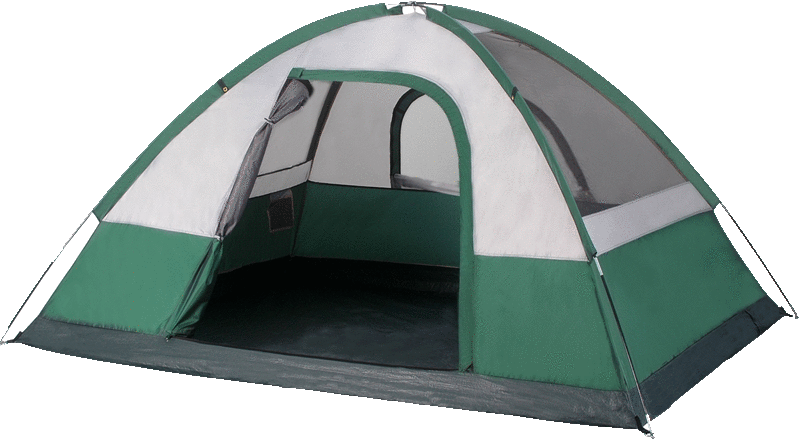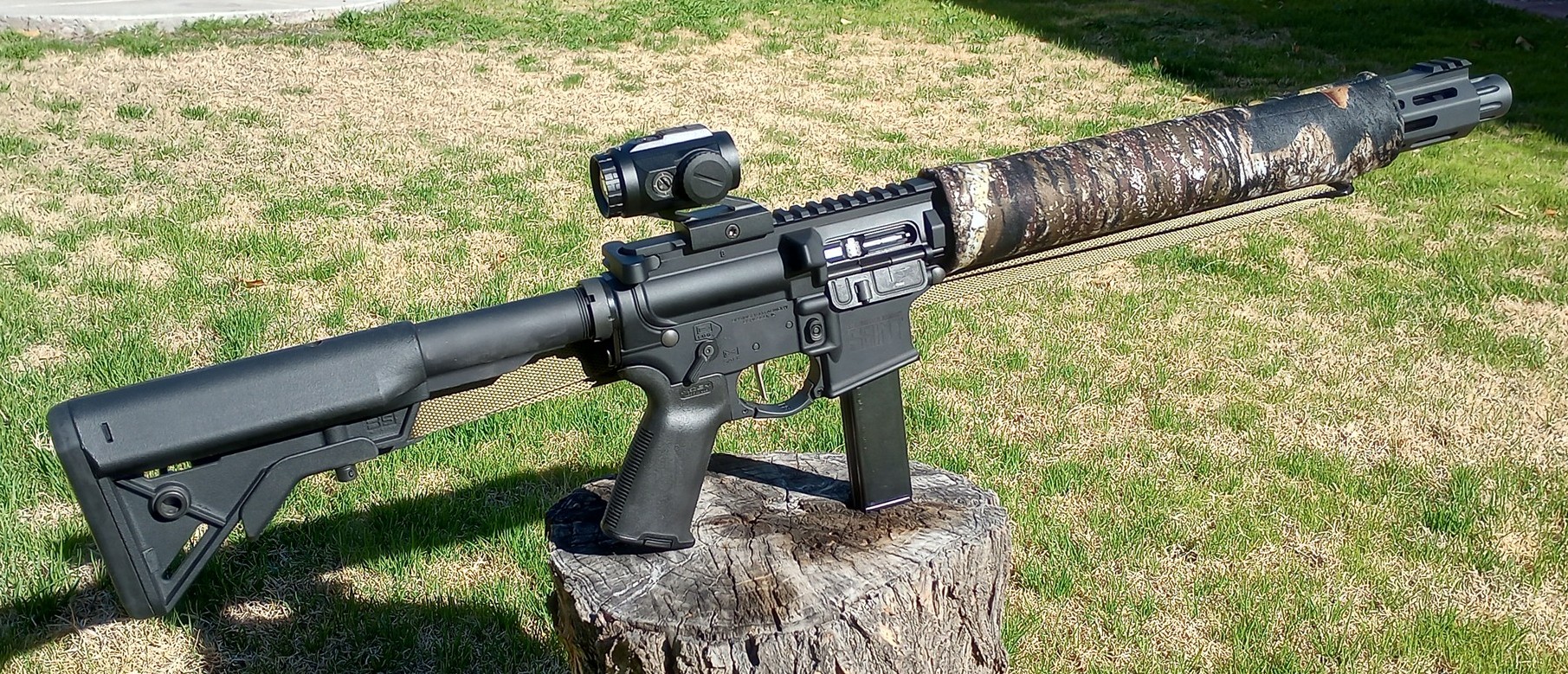I’m still trying to take my first Arizona big game animal with an AR-15. Leading up
to the 2024 General season javelina hunt, I made my decisions about what ammo to use,
of three different calibers, for three AR-15s in my inventory. Then I sighted those
rifles in, measuring velocities with my LabRadar chronograph.
I even took advantage of the Doppler radar’s ability to measure downrange velocities
to “true up” the ballistic coefficients of the ammo to be able to most accurately plot
the trajectory curves. Of course that is far more obsessive than what the average
javelina hunter will do, but I did it because I can, and it was of academic interest
to me.
With all the data accumulated, I generated the somewhat busy chart above. It requires
a bit of study to understand what is going on, but it seemed like the best way to
compare velocities, energy levels, and trajectories for all three rifles in one place,
against each other.
With data like this, I could determine how far I could shoot, considering delivered
energy and ballistic drop, for each of the three rifles.
The First Candidate – AR-6.8
I’ve mentioned, and hunted with this rifle several times in the past. It uses a
Ruger Elite AR-556 lower and an 18” Palmetto State Armory upper chambered for 6.8
SPC II. I’ve tried and tried and tried, to find a load that uses a bullet heavier
than 90 grains, that the rifle is happy with. I’m now resigned to the fact that it
likes only two bullets, both from Speer: the 90 grain TNT hollow point, and the 90
grain Gold Dot. It groups both of these bullets right around an inch at 100 yards.
Every other bullet or factory ammo that I have tried shoots groups at least double
that.
I guess that is OK, since both bullets are relatively inexpensive. The TNT serves
as the target and plinking bullet. I’ve actually found that this particular TNT does
not like to open up and expand, in spite of the name which would imply “explosive”
fragmentation on impact. It acts pretty much like an FMJ on water-filled plastic
soda bottles.
The Gold Dot is a bonded soft-point, perfect for game hunting. In fact, I believe
that it is the same bullet that Federal uses in their Fusion line of factory ammo.
Speer also offers a 115 grain .277” Gold Dot, but it does not shoot to the same level
of accuracy as the 90 grain bullets in my gun. Both .277” Gold Dots have been
impossible to find in the last year or two, but the last time the 90s were available,
I made a buy of 500 of them, so I am set for a while.
Next: Del-Ton Sport in 5.56mm
One day, I got a hankering to buy an inexpensive, entry-level AR-15 in .223/5.56mm.
I came home with this Del-Ton Sport. It is of basic M4-type configuration with a
light-weight 16-inch pencil barrel, flat-top upper receiver, classic triangular front
sight post/gas block, round carbine-length handguards, and a basic telescoping stock.
I equipped it with a Burris RT-3 fixed 3-power prism sight, sitting on top of a ½”
riser to get the scope high enough so that the front sight post is mostly out of the
field of view. This tiny scope keeps the character of the rifle light and minimalist
as I intended when I purchased it, but provides a very usable magnified sight picture
good for short to medium range distances. I zeroed the rifle at 100 yards.
I have been very leery of hunting javelina with a .223. I don’t like to chase game
that has run away after being hit. When I hit them, I want to hit them hard enough
to drop where they stand. But javelina is pretty small “big” game. When I found
that Federal offered a 62 grain bonded soft point Fusion MSR load in the 5.56mm
chambering, I figured that should do the job nicely.
And Finally: Springfield Saint Victor in 9mm
If I thought a .223 was barely enough, why would I think that a 9mm was adequate?
Well, the very first javelina I ever took was shot with a 9mm out of a handgun. When
I chronographed my 115 grain hollow point handload from the 16-inch barrel of this
rifle, I saw a velocity increase of over 200 fps compared to a handgun. Muzzle velocity
was 1550 fps yielding a muzzle energy of 613 ft-lbs.
When I again cracked the plastic hand grips of my .40 cal. Kel-Tec Sub 2000 firing a
hot hand-load, I decided that I needed a new 9mm Pistol Caliber Carbine. The decision
came down to the new S&W Response, and the Springfield Armory Saint Victor. The S&W
Response is a whole heck of lot less expensive, but it is made almost entirely out of
plastic. I decided no more plastic PCCs for me.
Years ago, the very first firearm I ever owned was a Colt 9mm AR-15. For many years
I’ve woefully regretted selling that gun. Springfield Armory recently introduced the
Saint Victor in 9mm. This PCC is an upgrade over the old Colt in a number of ways,
but uses the same “Colt pattern” 9mm stick magazines that my old Colt did.
The Saint Victor has both a 9mm dedicated upper receiver and lower receiver. Colt
adapted standard 5.56mm uppers and lowers to accommodate the short pistol round. The
Colt used an A1 carry handle upper receiver. The Saint Victor is a modern flattop.
The Colt used carbine length plastic handguards. The Saint Victor uses a slim free-float
aluminum M-Lok compatible handguard. The Colt used a fixed A1 buttstock. The Saint
Victor uses a B5 Systems Bravo telescoping buttstock. I could go on, but you get the
picture. Thirty years of AR platform improvements make this an awesome replacement for
my old Colt.
Even though the Springfield was considerably more expensive than the S&W Response, at
the time that I purchased it, Springfield was running one of their often-time promotions
where you get extra goodies along with your purchase. The gun normally ships with one
magazine, but with the “Gear Up” promotion, they sent me a second 32-round magazine, a
Vortex Crossfire red dot sight, a single-point sling and a $200 voucher for some
Springfield Armory branded clothing. I used that to get 4 shirts.
The Saint Victor ships with fold-down iron sights. With a red dot sight, you could keep
the iron sights mounted. But I removed the iron sights because I preferred to equip the
Saint with a Burris RT-3 3-power prism sight, like the Del-Ton wears. The prism sight
has an eye relief of 2.6 inches – it’s a scope, not an infinite eye-relief red dot, so
the irons had to go. I zeroed the Saint at 70 yards.
You may notice the camouflage handguard covers on both the AR-6.8 and the Saint Victor.
The first time I took the AR-6.8 hunting on a cool morning in February, I learned how
those aluminum handguards suck the heat right out of your hands, even when you are wearing
gloves. When I got home after the hunt, I ordered up some thin camouflage neoprene material
so that I could sew up an insulated handguard cover. When the Saint Victor became a javelina
hunting candidate, it got an insulated handguard cover of its own, using the leftover
neoprene material.
Back to the Chart
The left side axis is numbered from 0 on the bottom to 3000 at the top. This axis is used
both for velocity and energy. On the right, the vertical axis is numbered from -13 at the
bottom to positive 2.0 at the top. This is the trajectory axis, showing the bullet rise or
drop in inches. Across the bottom, the values are 0 at the left to 250 on the right. This
axis represents distance in yards.
The 6.8mm and the 5.56mm are both graphed out to 250 yards. The 9mm is graphed only out to
150 yards. Because the 9mm is graphed only to the shorter distance, it is easy to pick out
the velocity, energy, and trajectory curves for the Saint Victor.
A basic rule of thumb for hunting deer is a minimum of 1000 ft-lbs of energy delivered at
the animal’s distance. I don’t think that anyone has ever posited a minimum delivered energy
figure for hunting javelina. Obviously it will be a smaller figure than for deer, but how
do you honestly come up with a such a number?
Let’s take a look at an example factory 115 grain HP load in a handgun. Such a load worked
for me when I crawled to within 15 yards of that first piggy. The Federal Train + Protect
9mm 115 Grain factory load is rated at 1180 fps from a 4” handgun barrel. I used a 6-inch
Ruger Blackhawk, but in a 4-inch barrel, muzzle energy calculates to 356 ft-lbs. That was
enough to drop and stop the piggy.
So I think reasonably, let’s call the minimum for javelina as 350 ft-lbs delivered. The
Saint Victor carries that much energy in my 115 gr. HP handload to 100 yards. I don’t
know that I would try that far, but after zeroing at 70 yards, I was able to go 3 for 3
with the Saint Victor at that distance, hitting my favorite reactive target, water filled
12 ounce soda bottles. At 70 yards, the Saint is delivering 409 ft-lbs.
Looking at the energy for the 5.56, you can see why it is considered marginal for deer,
dropping under 1000 ft-lbs at only 20 yards. However, it holds onto 515 ft-lbs out at
250 yards, which should be quite adequate for javelina.
Reading the chart for the 6.8, you can understand why it was developed as a harder-hitting
alternative to the 5.56 in an AR-15. It holds on to deer killing energy to 180 yards. If
I could find a heavier bullet load that was accurate in my gun, it could carry 1000 ft-lbs
all the way out to 300 yards. There is no doubt that the 90 grain load has javelina-killing
power to any reasonable javelina hunting distance, given that it is not that hard to stalk
up on them.
One note on the trajectory comparison between the 5.56 and the 6.8: In this chart it appears
that the 6.8 may shoot flatter than the 5.56. They are probably pretty identical actually.
I just happened to zero the 6.8 one-half inch high at 100 yards, but I zeroed the 5.56
right-on at 100 yards. The velocity was ever-so-slightly faster in my 6.8 SPC handload versus
the 5.56 Federal Fusion factory load though.
But How Went the Hunt?
Ben and I found them from a distance in 2022. We were not able to get to them before they
disappeared. We hunted the same area in 2024, but this time we also had Sam along.
Unfortunately, the piggies never showed up to play this year. If we had found them, then
this would have been a hunt story instead of a comparative ballistics story.
I thoroughly enjoyed our time hunting in the beautiful spring green desert with my sons, but
the quest to take my first big game with an AR-15 continues …

![]()








